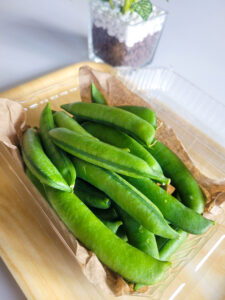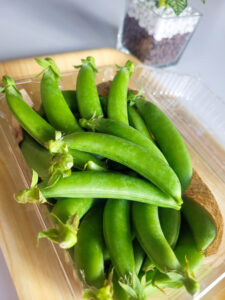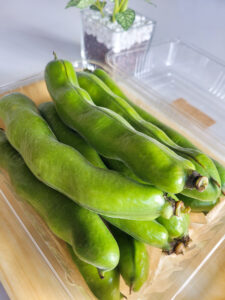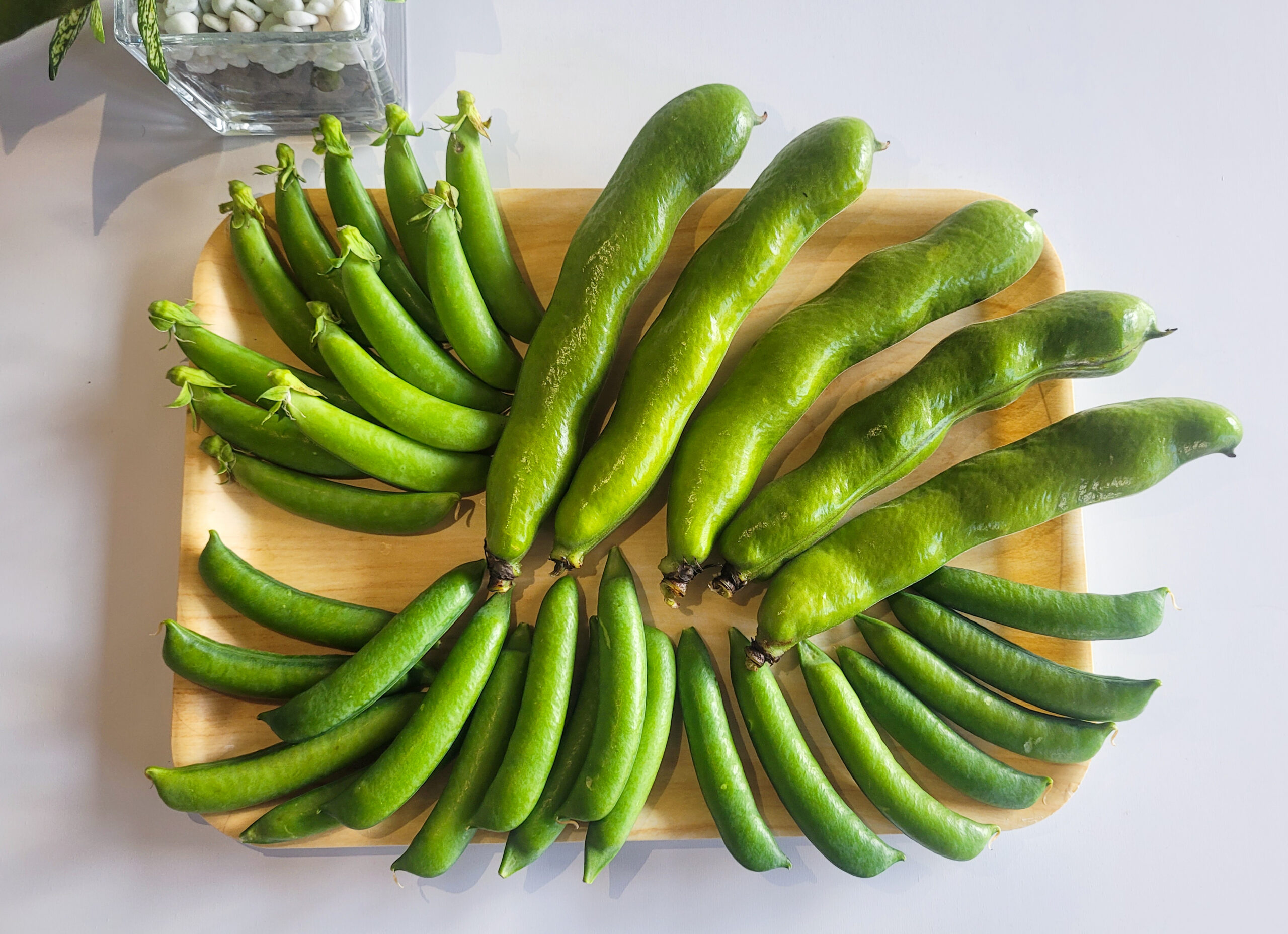Beans and peas hold a special place in Japanese cuisine and culture, deeply rooted in tradition and daily life. Known for their versatility, they are used in a variety of dishes, from savory stews to sweet treats like anko (sweet red bean paste). Beans like soybeans are the foundation of popular staples such as tofu, miso, and soy sauce, while peas appear in soups, rice dishes, and even pickled as snacks. Rich in protein and nutrients, they have been an essential part of the Japanese diet for centuries, symbolizing abundance, health, and harmony in meals. Their importance extends beyond food, as beans are also featured in festivals and ceremonies, celebrating good fortune and prosperity. Let’s take a look at three of the most popular kind of beans and peas in Japan !
Mamekozou and the Delight of Green Pea Rice: A Simple, Flavorful Japanese Dish

If you haven’t heard of まめこぞう (Mamekozou), it refers to the small, green peas that hold a special place in Japanese cuisine. These peas are celebrated for their sweetness and tender texture, which makes them an ingredient used in a wide range of dishes. The term まめこぞう refers to the playful personification of peas in folklore, and it also highlights the cultural significance these peas hold in Japanese food traditions.
In Japan, green peas are commonly used in 豆ごはん (mame gohan), a comforting rice dish where the peas are mixed with short-grain rice, adding a subtle sweetness and a burst of color. The peas’ flavor complements a variety of other dishes, including soups, stews, and salads. In addition to their culinary uses, green peas are also enjoyed as a snack, pickled or roasted, often served alongside drinks.
But the most popular way to enjoy green peas in Japan is definitly through 豆ごはん (mame gohan), or green pea rice. This simple and flavorful dish is a favorite during spring when fresh peas are in season.
Here’s how to make it:
- Rinse and Soak the Rice:
Wash 200 grams of short-grain Japanese rice under cold water until the water runs clear. Soak the rice in water for about 30 minutes. - Prepare the Peas:
Blanch 75 grams of green peas in boiling water for about 2-3 minutes. Drain the peas and set them aside. - Cook the Rice:
Drain the soaked rice and add it to a rice cooker. Add 300 milliliters of water, a pinch of salt, and a small splash of soy sauce for flavor. - Add the Peas:
Once the rice is cooked, gently fluff it with a rice paddle or spoon, and stir in the blanched green peas. Let the peas infuse the rice with their color and sweetness. - Serve and Enjoy:
Serve your mame gohan as a side dish to complement grilled fish, pickles, or any other traditional Japanese meal.
Snap Peas: A Crunchy and Sweet Addition to Japanese Cuisine

Do you know about スナップエンドウ (snap peas)? They are a popular vegetable in Japan known for their sweet, crispy texture. These peas can be eaten as a whole, pod and all, and they are celebrated for their refreshing crunch. They are typically used in a wide variety of Japanese dishes, particularly in the spring when they are at their freshest. In addition to their culinary versatility, snap peas are loved for the vibrant green color they bring to any meal.
Snap peas are often featured in 炒め物 (stir-fries), 天ぷら (tempura), and 味噌汁 (miso soup), and can also be served as a healthy side dish or snack. The peas’ sweet, crunchy texture pairs well with savory flavors like soy sauce or sesame oil, making them an ideal addition to many traditional Japanese dishes. They are also popular as a fresh snack, lightly seasoned with salt or soy sauce.
Here’s a simple and delicious way to prepare snap peas:
- Prepare the Snap Peas:
Rinse 150 grams of snap peas (スナップエンドウ) thoroughly under cold water. Snap off the ends of the pods (though you don’t need to remove the strings along the sides). - Blanch the Snap Peas (Optional for added color and tenderness):
Bring a pot of water to a boil. Add the snap peas and cook for about 2-3 minutes, just until they turn bright green. Immediately transfer the peas to a bowl of ice water to stop the cooking process and preserve their color. - Sauté the Snap Peas:
Heat 15 milliliters (about 1 tablespoon) of oil (either olive oil or sesame oil) in a frying pan over medium heat. Add the snap peas and sauté for 2-3 minutes, stirring frequently to ensure they are evenly cooked. - Season and Serve:
Add a pinch of salt to taste, or drizzle a little soy sauce or sesame oil for extra flavor. For a decorative touch, sprinkle some sesame seeds on top. Serve the snap peas as a side dish or mix them into other dishes.
Soramame: The Buttery, Rich Fava Bean in Japanese Cuisine

What about 空豆 (soramame)? Also known as fava beans, they are a beloved legume in Japan, especially enjoyed during the spring season when they are at their freshest. The name 空豆 literally translates to “sky beans,” referring to their broad, flat shape and the fact that they are typically harvested from pods that grow upward, reaching toward the sky. These beans are prized for their rich, creamy texture and slightly sweet, buttery flavor, making them a versatile ingredient in many traditional Japanese dishes.
Soramame are commonly used in 空豆ごはん (soramame gohan), a comforting rice dish where the beans are mixed with short-grain rice, creating a satisfying and flavorful combination. They are also added to 味噌汁 (miso soup) or stir-fries to bring richness to the dish. In addition to savory uses, soramame are sometimes roasted and salted to create a crunchy, flavorful snack, perfect for festivals or casual snacking.
Here is a tasty way to enjoy soramame:
- Prepare the Soramame:
Start by removing the fava beans (空豆, soramame) from their pods. You’ll need about 150 grams of soramame for this recipe. If using fresh beans, blanch them in boiling water for about 2-3 minutes to soften their skins. If using frozen beans, simply thaw them before use. - Cook the Rice:
Wash 200 grams of short-grain Japanese rice under cold water until the water runs clear, and soak it for about 30 minutes. Then, cook the rice according to your rice cooker’s instructions (usually about 300 milliliters of water for 200 grams of rice). - Sauté the Soramame:
Heat 15 milliliters (about 1 tablespoon) of sesame oil in a frying pan over medium heat. Add the blanched or thawed soramame and sauté for 2-3 minutes, allowing them to absorb the flavor of the oil. - Add the Soramame to the Rice:
Once the rice is cooked, fluff it with a rice paddle or spoon and gently mix in the sautéed soramame. You can also add a pinch of salt or a splash of soy sauce for extra flavor. - Serve and Enjoy:
Serve your 空豆ごはん (soramame gohan) as a side dish to complement grilled fish, pickles, or any other traditional Japanese meal.
As spring is starting in Japan, make sure to try those delicious and healthy legumes from Japan! At Discover-with, we get ours from the wonderful Matsuki Gardening to be sure to have the freshest and highest quality peas ! Don’t miss out !

